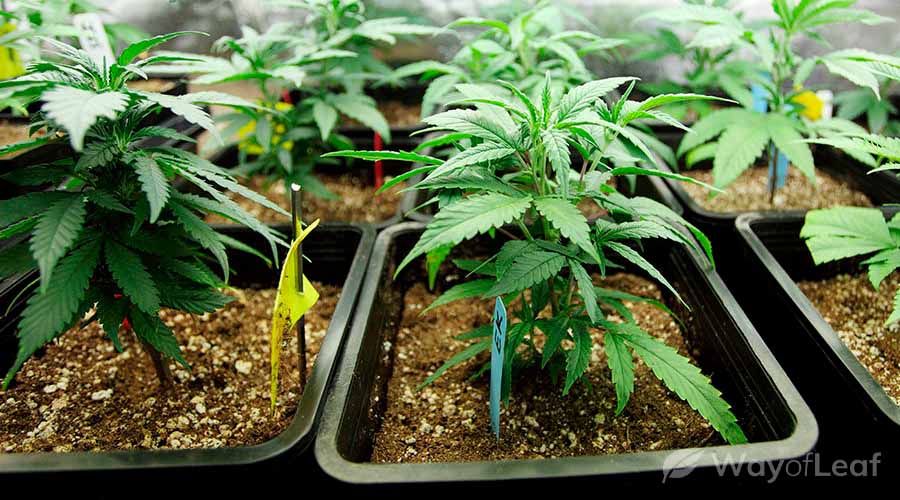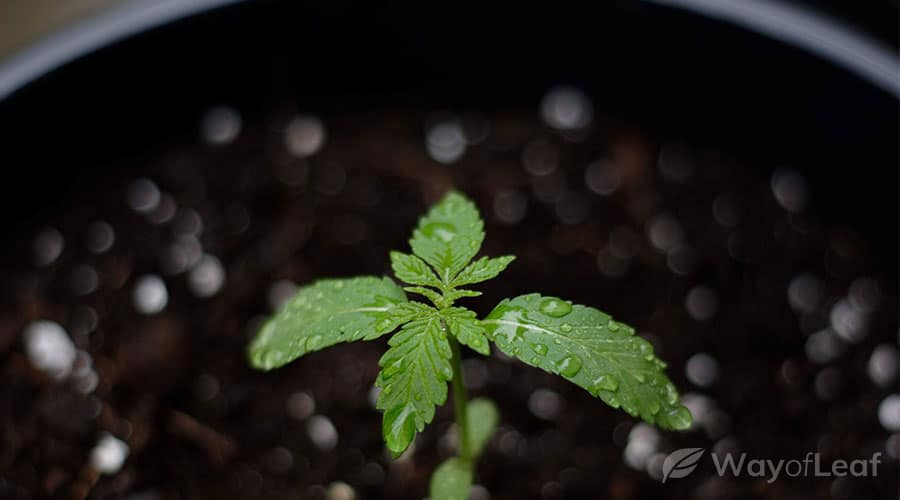Cannabis is becoming legal throughout the United States, whether for medical or recreational purposes. Those in medical states may be able to grow their own marijuana, depending on the specific legislation. If you live far away from a dispensary, then growing can be an excellent option; plus, it’s a rewarding task!
However, the task of growing cannabis can be daunting for novice cultivators. Marijuana can be quite particular about its growing environment, so you need to read up on the proper techniques. It can even be helpful to find growing guides for specific strains!
In this generalized guide, we will explain one of the fundamentals of growing pot: Choosing a pot to grow it in! Here are our top five tips for choosing the right container for your cannabis.
1. Know the Types of Pots You Can Use
One of the first things to know is that there are different kinds of pots used for growing. If you have a green thumb and already garden, you’ll probably have some handy containers lying around just waiting to be put to use.
Here is a brief breakdown of the most common pots used in cannabis growing:
- Plastic Container: A standard plastic pot is used for planting. It is inexpensive and provides good drainage, but it is not very durable.
- Ceramic Container: Terracotta plant pots are a familiar sight for many gardeners. They’re great for temperature regulation but not so good for drainage.
- Fabric Containers: Fabric pots have a thick fabric covering; they support soil and plants surprisingly well. Fabric containers have excellent airflow and drainage but can be flimsier than other containers.
- Air Pots: Similarly to fabric containers, air pots provide incredible airflow via holes throughout the pot. However, they may be expensive and lead to an increase in watering.
Of course, these are not the only pots available. There are other containers you can use, but most growers use the above.
You need to consider things like cost and the size of your grow room, as well as how many plants you are growing. Even with limited space and areasonably low budget, you can make any of these pots work, but you may need to adapt the growing process depending on the qualities of your container.
2. Understand Growing Mediums
Another vital factor in choosing a container is thinking about which growing medium you will be using.

When you first start growing your plants, you’ll need to choose what growing medium you’ll use. No matter what, your plants will require access to water, oxygen, and nutrients. Typically, growers use a soil medium. Plants can acquire water and nutrients from the soil, as well as oxygen, depending on how good the airflow of the container is.
Other growers use hydroponics, which means growing in water with an alternative medium such as rock wool or coco coir.
Different containers are better for different growing mediums. Air pots are ideal for hydroponics, for example. As long as your roots are developing healthily, then you’re doing something right!
3. Finding the Right Sized Container
Importantly, you need to ensure that your plants have the right size container. Otherwise, they won’t be able to draw the right amounts of oxygen, water, and nutrients from the soil.

A seedling will only need a very small pot. Some growers even use a solo cup to begin with! As it grows, you will need to transplant it to larger pots (more on this in the next section).
A good rule of thumb is to use two gallons for every 12” of height. You will need to research the strain you’re growing to find out what containers you will need. Here is a rough guide to the size you will require:
- 12” plant: 2-3 gallons
- 24” plant: 3-5 gallons
- 36” plant: 6-8 gallons
- 48″ plant: 8-10 gallon
- 60″ plant: 12+ gallons
By the way, fabric pots may need to be twice the usual size due to how quickly they dry out.
4. Transplant When Needed
Eventually, your young cannabis plant will outgrow its seedling pot and will need to be transferred (transplanted) into a larger container. When the plant’s leaves reach the edge of the pot, it’s time to move the plant.
Avoid watering your plants a few days before it’s time to transplant. This helps the soil stick better when removed.
Here are our top tips for transplanting:
- Before you begin, wash your hands and wear gloves so you don’t contaminate the roots—they’re really sensitive.
- Fill the new container with the growing medium and transfer the plant from one pot to another.
- Be careful not to damage the roots, as this could shock the plant and kill it.
- Avoid intense light, as this may also shock the plant.
- The first transplant is the one most likely to cause shock, so be extra careful!
- Water the soil after transplanting.
- Do not transplant any plant after it has started flowering.
5. Make Sure You Catch Water Run-off!
When growing cannabis, you’re bound to get some water runoff. As the water moves through the soil, it may pool at the bottom unless you have adequate drainage. Most plant pots have holes in the bottom for this purpose – but you don’t want water to end up all over the floor!
Water needs to be collected after every watering, so you need to find a simple and effective water collection system. This might be easier than you think!
All you need is a saucer or a tray. Saucers are ideal for just one or two plants, but you need to remember to empty the water often. Trays are better for lots of plants as they can collect water from multiple pots at once.
Another benefit to trays is that you can use a water transfer pump to effectively move the water out of the tray. This removes a lot of work for you!
Ultimately, whichever tool you choose is dependent on how many plants you are growing at any given time.
Final Thoughts on Choosing Pots for Your Cannabis Plants
Choosing the right container for your cannabis plants is vital, but it doesn’t have to be complicated. In fact, it’s pretty straightforward to find ideal pots for your plants. You need to consider critical factors such as how many plants you’re growing and what your growing area looks like. Different containers work for different cultivators, and so there isn’t any one right answer.
In general, you need to ensure that the container is the correct size and provides adequate drainage and airflow. Once you have that covered, you should be good to go!
Do you have any questions? Leave them below in the comments, and a member of our team or our community will respond with advice.
![How to Dry Cannabis Flower [The RIGHT Way…]](https://wayofleaf.com/wp-content/uploads/2018/08/wol-banner-how-to-dry-marijuana-flower-640x225.jpg)






![Cannabis Growing During Different Seasons [Guide]](https://wayofleaf.com/wp-content/uploads/2018/12/cannabis-and-the-four-seasons-640x225.jpg)
![8 Tips for Growing Afghan Kush Marijuana [Grower’s Guide]](https://wayofleaf.com/wp-content/uploads/2018/12/tips-for-growing-afghan-kush-marijuana-growers-guide-640x225.jpg)

![Why Does Cannabis Turn Purple [Myths and Facts]](https://wayofleaf.com/wp-content/uploads/2018/11/wol-banner-why-does-cannabis-turn-purple-640x225.jpg)

